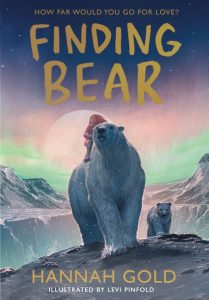




 Finding Bear is a continuation of Hannah Gold’s debut and award winning novel The Last Bear (reviewed in StoryLinks) but it works very well as a stand alone. Hannah has also written The Lost Whale and her latest book Turtle Moon is coming out this September. All her books have a strong environmental ‘save the planet’ theme and Finding Bear is no exception
Finding Bear is a continuation of Hannah Gold’s debut and award winning novel The Last Bear (reviewed in StoryLinks) but it works very well as a stand alone. Hannah has also written The Lost Whale and her latest book Turtle Moon is coming out this September. All her books have a strong environmental ‘save the planet’ theme and Finding Bear is no exceptionError: Contact form not found.
